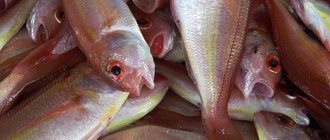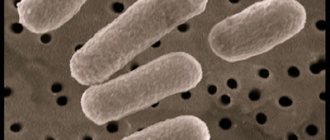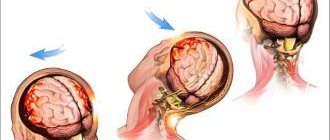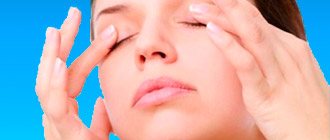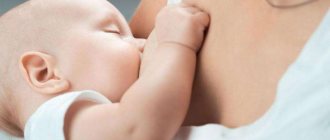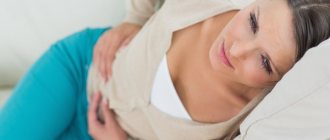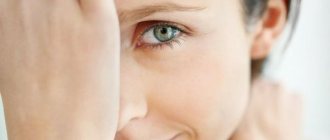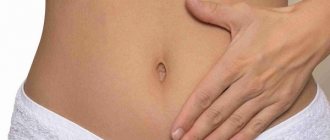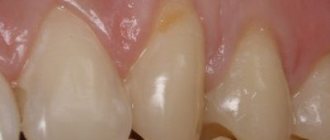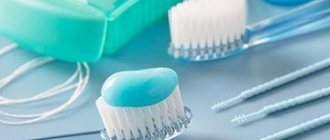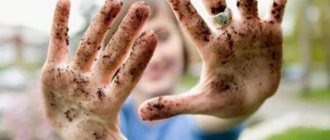Recently, stroke can truly be considered a problem of the 21st century. The percentage of diagnoses of this disease increases from year to year, as evidenced by statistical data. The seriousness of the disease is indicated by its consequences, which can take an unforeseen character. Since the modern technological process does not stand still and moves in step with innovative developments, the possibility of recovery after a stroke has become a reality today.
Complete recovery of the body depends on many factors, including the treatment method. As a rule, it is complex, which implies the joint use of drug treatment, physiotherapy and the use of traditional methods. Let’s look at how to achieve a positive effect at home in more detail in our article.
How long does post-stroke rehabilitation last?
Rehabilitation of a patient after a stroke
There cannot be any specific figures in this regard, since much depends on the type of ischemic stroke, its size and location, as well as on the time elapsed between the onset of the disease and the provision of medical care. Prognosis for rehabilitation directly depends on these indicators. In such cases, you have to work with patients for a long time (almost until the end of your life).
Table. Approximate time frames and forecasts for restoration
| Type of ischemic stroke | Duration of rehabilitation |
| Stroke with minor neurological deficit (deterioration of vision, mild paralysis, dizziness, impaired coordination). | Partial recovery requires one to two months, complete recovery requires two to three months. |
| With a pronounced deficiency (accompanied by severe paralysis and severe incoordination disorders). | For partial recovery (so that the patient has the opportunity to self-care) it takes six months. Full recovery is extremely rare and requires many years of rehabilitation. |
| A serious illness accompanied by persistent deficiency (paralysis on one side leads to disability and other defects). | Partial recovery requires an average of one to two years, but complete recovery is impossible in this case. |
The duration of rehabilitation depends on the severity of the stroke
As you can see, the more severe the ischemic stroke, the longer the rehabilitation takes. But, characteristically, with such a stroke, recovery occurs faster than with any other.
On a note! Not in all cases, complete recovery is possible due to necrosis of brain neurons, the functions of which neighboring undamaged cells cannot perform. Here the only thing that remains is to do special exercises (every day or small courses) for the rest of your life to avoid new stroke attacks.
But, despite the type of disease and obvious prognosis, you still shouldn’t despair, because each body has its own vital resource, and simple exercises will help in recovery.
Step-by-step rehabilitation process
This process involves maximizing the normalization of basic physiological indicators. It should be noted that after inpatient treatment, the process of full recovery from the illness must be supported and continued at home.
The patient should be maximally tuned to a positive outcome of the disease from a psychological point of view. The recovery process at home includes several stages.
Stage No. 1
- Provides for independent showering and visiting the bathroom without the help of others. Dressing without assistance.
- Daily massage or other set of physical exercises aimed at the complete recovery of the patient. In parallel with these activities, daily walks of the patient are recommended, which are aimed at avoiding the occurrence of atrophy of the limbs.
- Carrying out activities involving the development of balance, the implementation of which will be helped by the use of a special stick or walker.
- Performing a daily set of swing movements aimed at flexing and extending the limbs.
After completing the specified rehabilitation, the patient needs to direct all his efforts to maximize the success achieved, which includes: independent movement and riding in public transport without the help of others. For maximum confidence in the achieved result, you should purchase a mobile phone, which should be configured with a shortcut button in case of an emergency.
The patient should be configured for maximum independent care: use of household items, independent nutrition and body care.
At the same time, do not forget about the development of muscular and mental endurance.
With high-quality implementation of these activities, maximum effectiveness is ensured. Practice shows that this time is enough to fully restore speech and motor functions.
Do not ignore daily motor skills activities, which include the following activities:
- embroidery
- playing musical instruments
- knitting
- drawing
The percentage of complete recovery of the body after a stroke is 70%. This is a fairly high number. The maximum duration of the rehabilitation period is 6 months.
To increase the speed of recovery, the patient will need to participate in various rehabilitation programs involving the participation of a speech therapist, nutritionist, neurologist and other specialists.
The initial rehabilitation process begins with working on the limbs. To do this, you need to sort through and stretch your fingers several times a day. This helps increase blood circulation and minimize the occurrence of bedsores. In addition, the patient will restore the previous functioning of muscle tone.
When conducting classes, constant monitoring of the patient’s physiological state is required. In particular, changes in systolic pressure, the frequency of which is at least 2 times a day.
Regarding the patient’s nutrition, we can say the following: it must be developed by the attending physician and observed daily. The recovery process is maximized by the friendly attitude of loved ones, especially if they show the patient’s indispensability in their lives.
Rules for maximum rehabilitation of the patient
- Setting main goals and objectives, the implementation of which should be gradual and smooth.
- Combination of healthy and diseased limbs when performing physical activity.
- Concentrating the patient on achieving the main goal.
- Parallel use of additional items to achieve the desired result.
Unconventional methods of recovery after stroke
The use of grandmother's methods is effective when the patient has completed basic drug treatment and has been discharged for further recovery at home. As a rule, such treatment should be carried out under the supervision of the attending physician and include the following recommendations:
- performing swinging movements of the limbs
- swing ride
- pushing off with injured limbs
- introducing a sufficient amount of citrus fruits into the daily diet with the addition of a small amount of honey
Effective folk recipes
Garlic+honey
A small amount of garlic mixed with honey has a beneficial effect in the fight against paresis of the limbs. It is enough to take 1 teaspoon of the prepared mixture on an empty stomach.
Pine cones + alcohol
An alcohol tincture of pine cones, maximally saturated with phytoncides, helps to restore the work of nerve cells affected by a stroke.
As a preventative measure, the use of a special mattress, the inside of which is filled with millet or salt, helps.
Ointment to combat bedsores
Required ingredients:
- onion – 2 pcs.
- a small amount of vegetable oils
- wax
Finely chopped onions should be simmered for half an hour in a small amount of vegetable oil, strain and add wax. Apply the resulting ointment to bedsores or future problem areas.
An integrated approach to a common problem can bring the patient as close as possible to recovery.
The amount of time required to restore the body varies and depends on the complexity of the disease and the timeliness of the patient seeking medical help.
Estimated prognosis for recovery from stroke
- minimal number of lesions of the limbs, face and coordination - the first positive effectiveness is observed after 1-2 months. Full recovery requires the patience of loved ones and attentive attitude towards the patient for 2-3 months
- stroke with pronounced neurological abnormalities - the recovery period lasts from six months to a year
- serious neurological disorders - rehabilitation period from one to two years, it is possible that there will not be a full recovery
From this information, it is worth concluding that no matter how complex the stroke may be, it is worth showing patience and endurance, since the desired final result depends on this.
Ischemic stroke rehabilitation at home
Recovery course
The main goal of rehabilitation is to restore limb mobility. You need to get down to business in the first days after a stroke. Below are the features of all exercises.
- Reduced muscle tension and tone. With any stroke, paralysis occurs, in which there is high excitability and increased tone of muscle tissue.
Reducing muscle tension
- Resumption of fine movements, which are the most important functions of the limbs.
This especially applies to brushes. Exercises to restore motor activity after a stroke - Normalization of microcirculation. With the described disease, the innervation of tissues is disrupted, which causes problems with their blood supply.
- Protecting the skin of the hands and feet from bedsores. Where there is the greatest pressure (for example, on the heels), bedsores often appear.
It is important to protect the skin from bedsores
On a note! First, you need to discuss the exercises with a doctor, who will not only select the optimal complex, but also inform you about all the nuances and stages. Roughly speaking, the peculiarity of the exercises is as follows: it all starts with simpler movements, the volume expands gradually and depends on individual characteristics.
You should not overload the patient - this is as bad as lack of exercise.
Overloading during exercise is harmful
Before starting the lesson, it is necessary to warm up the muscles (this can be done, for example, with warm water procedures or a light fifteen-minute massage). Obviously, one of the relatives should help the patient with all this. The prescribed set of exercises should be performed two to three times a day (each course should last about an hour). At the same time, a person should not be overtired. If overwork is still observed, it means that the loads were selected incorrectly.
What is the success rate of a favorable outcome after a stroke?
According to statistics, in most cases, stroke is hemorrhagic in nature.
Consequences of hemorrhagic stroke
- Damage to a limited area results in problems with the functioning of the cerebral hemispheres, which contributes to a person’s loss of reproduction of sensory and motor activities.
- The appearance of all kinds of paresis, which, as a rule, are unilateral. They usually take at least 3 months to recover. In more severe cases, patience is required. But after a year, the patient shows positive changes.
The patient's chances are minimized during the next diagnosis.
- When the main hemispheres of the brain, which are responsible for the basic functions of human life, are affected. Practice shows that in this case the percentage of deaths is maximum.
- With lacunar brain damage with lesions reaching 1/2 cm in size.
- When suffering from an illness in old age.
- In the presence of a certain number of chronic diseases: alcoholism, drug addiction and the body as weakened as possible by acute respiratory viral infections.
Gymnastics during bed rest
Of course, in such cases, due to functional limitations, it is not easy to do anything fully, so the patient must be helped. The complex described below is designed for the acute post-stroke period or for spastic paralysis with increased muscle tone. The patient himself in such conditions is unable to straighten his limbs, therefore, someone else must do it instead.
Rehabilitation after a stroke is a long and exhausting (primarily morally) process
Gymnastic exercises after a stroke
- Fingers, hands, elbows and other joints are bent alternately.
- These same segments perform rotational movements. Here the movements that an ordinary person can perform are imitated.
- The spasmodic arm is stretched (for example, with the help of a splint), which is prescribed mainly for severe paralysis. The bent arm smoothly extends and is attached to the board with a bandage. These manipulations are performed gradually with all parts of the limb (hand, forearm). The hand is fixed for 30 minutes, but if the patient does not feel discomfort, then it can be longer.
- The next exercise is intended for those who have already restored hand function. The towel is hung over the bed, then the hand is grabbed with it and various movements are made (the hand is abducted/adducted, bent/unbent, raised/lowered). The towel gradually rises.
- A ring with a diameter of approximately 40 cm is made from rubber - such a device helps to perform many exercises. The ring can be placed between the hand and some other object, leg and arm, forearms, etc. The rubber should be stretched by retracting its ends.
- Spasms of the hamstring muscles can be eliminated by placing a hard cushion (the thickness of the latter should gradually increase). This way the muscles will stretch, and the range of their movements will increase.
- The shins are clasped with the hands, after which the legs are extended and bent at the knees by sliding the soles along the bed.
- The patient raises his hands and tries to grab the headboard. Then he pulls himself up (not all the way), extending his toes and feet in parallel (something similar to stretching).
- To restore the functionality of the eyeballs, they need to be rotated several times in different directions. The movements should be circular. After this, the procedure is repeated, but with eyes closed.
- The gaze is fixed on some object. The patient should rotate and nod his head without moving away from the fixation point.
A set of passive exercises after a stroke
Impact of stroke on motor functions
Acute circulatory disorders cause failures of all body systems. In addition to incoherent speech and dysphagia, the patient experiences numbness in the limbs and paralysis. If measures are not taken in time, these symptoms can develop into a permanent phenomenon. The presence of muscle cramps can be extremely dangerous and foreshadow a recurrence of the attack.
The following signs are typical for motor dysfunction:
- there is uncertainty, unsteadiness of gait;
- inability to develop speed of movement;
- the patient cannot bend, straighten or straighten the arm or leg as much as possible;
- painful spasm of the leg muscles prevents flexion of the pelvic and knee joints, often occurring in the foot;
- movements of the paralyzed leg can increase arm spasms;
- coordination of movements is impaired;
- partial or complete lack of sensation in the limbs;
- the patient is unable to place his foot on the sole, as a result, when walking, movements begin from the toe, and not from the heel;
- walking after a stroke may be accompanied by sudden falls.
Rehabilitation measures begin to be carried out on an individual basis; there are no clearly established deadlines for the recovery process, everything depends on the patient’s condition. Some patients begin to walk after 2–3 months, while others require much more time to regain lost functions. In any case, the patient and loved ones need to be patient and work to get a positive result.
Despite the significant impact of the extent of brain damage on the dynamics of recovery, the support of relatives greatly contributes to the success of the measures. The psychological mood of the patient himself is no less important. A depressive state caused by a feeling of helplessness, doom and reluctance to act can ruin all ongoing rehabilitation work in the bud.
Drug therapy does not end after the acute phase of the pathology. The patient may be prescribed medications for a long period, depending on the condition and symptoms:
- drugs that stabilize normal blood flow through the vessels, normalizing heart function;
- means to lower blood pressure in case of high levels;
- medications that thin the blood, preventing the formation of blood clots in the extremities (not used for hemorrhagic stroke);
- muscle relaxants that relieve muscle spasms;
- neurotrophic drugs that promote motor activity;
- antioxidants to restore brain cells.
Gymnastics to perform while sitting
Such exercises help restore targeted movements of the upper limbs, strengthen the back muscles and prepare the legs for future walking.
- The man sits down and grabs the edges of the bed with his hands. Inhaling, he arches his back and simultaneously stretches his torso. Exhaling, he relaxes. The exercise must be performed nine to ten times.
- The patient sits on the bed, does not lower his legs - they should be at the level of the body. The legs rise and fall one by one, the procedure is repeated several times.
- The body position is the same. Pillows should be placed under the patient's back so that it is relaxed, and the lower limbs should be extended. The legs are bent one by one and brought to the chest, while inhaling, the knees are clasped with the hands, the breath is held for a short time, after which the patient exhales and relaxes.
- The patient sits in bed, puts his arms back. Inhaling, he moves his shoulder blades as much as possible, simultaneously throwing back his head. Exhaling, he relaxes.
Treatment of spasticity after stroke
Why is a proper rehabilitation period so important?
With a fracture or other serious injury to the limbs (often followed by long-term treatment), the damaged area usually no longer experiences the same physical stress, as a result of which significant changes occur in it (as well as in the entire body). In addition to pain, the patient may experience post-traumatic depression or depression associated with changes in quality of life. Also gradually (from the moment of injury) in the area of the injured limb develops:
- muscle atrophy (due to a passive state and insufficient blood circulation);
- vascular changes (due to disturbances in the speed and mass of blood flow);
- reflex tension of the limbs;
- deterioration of pulmonary ventilation (due to a possible reduction in lung capacity);
- malnutrition;
- hypotension.
It must be remembered that the development of the indicated symptoms is often aggravated if much more time passes from the moment of injury to the end of treatment than, for example, after receiving a recent injury. Thus, rehabilitation after endoprosthetics prescribed after a long, chronic illness will be longer than after joint replacement after a recent injury. Therefore, it is so important to begin (always under the supervision of a doctor!) restoration measures as early as possible.
How to restore speech
Restoration of processes related to speech function occurs much more slowly. Rehabilitation may even take several years. The main thing here is not to lose heart, to continue studying, even if there is no result for a long time. Sooner or later your speech will improve.
Speech restoration
All exercises are aimed at restoring the functionality of nerve cells in the speech center. Both speech and hearing need to be constantly trained. It is necessary to talk to the patient all the time so that he himself can reproduce sounds.
If speech is completely lost, then you should start with the pronunciation of individual syllables. To do this, you can, for example, pronounce parts of words without endings (the latter must be pronounced by the patient). Over time, the volume of words increases. The final stage is the repetition of tongue twisters and poems.
Speech restoration - repeating poems and tongue twisters
On a note! Singing is very useful: if a person hears it, and then sings with loved ones, then the speech apparatus will recover faster than if normal speech were trained.
Also, the patient must again learn to pronounce sounds correctly; to develop muscles, he needs:
- curl your lips into a tube;
- lick them with your tongue from one side to the other;
- bare teeth;
- alternately bite the lower and upper lips;
- push your tongue out as much as possible.
You need to learn to pronounce sounds clearly
Disability and work
Unfortunately, the statistics related to people affected by stroke are depressing. Only every fifth of them recovers so successfully that they return to their work and normal life activities. The majority become disabled.
If a person becomes able to move independently, this does not mean that he is immune from any problems. It is advisable that he be accompanied by a guardian at all times, especially when walking outside. After all, a person can lose consciousness and fall at any moment, even if he walks leaning on a stick.
At first, a person, depending on the severity of his condition, is given incapacity for work for 3-6 months. In the future, the patient has the right to receive disability of 1, 2 or 3 groups. Re-examination of disability is carried out every year (for the first group - every 2 years). But this only applies to people under 60 and 55 years of age (men and women, respectively). In elderly patients, re-examination is carried out only if there is a significant change in condition.
Even if a person successfully completes a course of treatment, restores his skills and his ability to work returns, then when choosing a job he should take into account the following prohibitions:
- to work with neurotoxic substances,
- to increased nervous, physical and psychological stress,
- to work in rooms with high temperature and humidity.
Swallowing recovery
Sometimes after a stroke, patients feel food only on one side of the mouth. In such cases, you have to relearn how to eat, while simultaneously performing exercises aimed at restoring swallowing.
Swallowing recovery
Such exercises include:
- simulated swallowing;
- drawing out the sound “and” with parallel tapping of the fingers on the larynx;
- imitation of yawning (mouth should be wide open);
- puffing out your cheeks (at least for five to six seconds);
- gargling with water.
Features of rehabilitation after fractures of the upper limbs
During rehabilitation after a fracture of the upper limbs, special attention is paid to:
- rapid minimization of the consequences of forced immobilization (muscular and vascular atrophy);
- restoration of joint mobility;
- tissue tone (with normalization of elasticity);
- elimination of swelling at the fusion sites.
The recovery period is divided into stages:
- complete immobilization of the injured limb;
- post-immobilization (with removal of plaster, splint or splint);
- restoration of the original mobility of the hand.
The following are usually used as restorative procedures:
- exercise therapy exercises (to restore arm mobility);
- therapeutic massage (to eliminate swelling);
- diet enriched with calcium (for bone growth).
A few words about proper nutrition
How to eat after a stroke
The essence of the diet during the period of post-stroke rehabilitation is to give up (at least partially) animal fats and salt. This will help lower cholesterol levels and, as a result, prevent relapse, as well as normalize blood pressure. As a result, recovery will occur faster, and new areas of the brain will not be affected.
Products recommended for stroke
Particular attention should be paid to plant fiber, dairy products, juices and vegetarian soups. And potatoes, apricots, carrots and citrus fruits contain a lot of potassium, which has a beneficial effect on health after an ischemic stroke.
Is it possible to fully recover?
Treatment of ischemic stroke largely depends on the location of the lesion and the size of the lesion. If the hemorrhage is one-sided, then the person partially loses vision, loses orientation in space, and loses the ability to move the limbs. Often the victim experiences a complete loss of functionality of the right or left half of the body.
In general, the rehabilitation process takes from 3 months to a year. It is effective if first aid was provided within 3 hours after the attack. If everything was done correctly, then after a year and a half, about 58% of victims recover almost completely. However, with extensive brain damage, the chances of rehabilitation are approximately 1%. Among the group of patients aged 70 years or more, only 10% recover. If an ischemic stroke occurs as a result of diabetes mellitus, atherosclerosis or chronic alcoholism, then only 5% of patients will be able to recover.
When vital centers of the cerebral cortex are damaged, especially the brainstem, where the nerve bundle is located, the victim falls into a coma and dies in 99% of cases.
The use of folk remedies in rehabilitation
The patient should adhere to the following recommendations.
- The first time after a stroke you need to adhere to bed rest.
- Instead of tea, it is better to drink mint infusion.
- The patient should eat as many lemons as possible.
- At night he needs to drink a glass of warm milk.
In addition, there are several recipes that will speed up the body's recovery.
Tincture of pine cones
Tincture of pine cones
Several cones are crushed and filled with vodka. The resulting mixture is poured into a jar and placed in the refrigerator for several weeks. You should take 1 tbsp. spoon after breakfast.
Decoction
To prepare the decoction you can use:
- garlic;
- beets;
- onion;
- hawthorn;
- lily of the valley;
- rose hip.
Garlic and onion
Beet
Hawthorn
May lily of the valley (herb)
Rose hip
Before taking the decoction, you should definitely consult your doctor, because taking herbs incorrectly can be harmful to your health.
Rose hip decoction
Basic rehabilitation methods
The first stage of rehabilitation is associated with bed rest. During this period, it is necessary to perform passive and active movements of the limbs in order to normalize muscle tone. Breathing practices prevent the appearance of congestion in the lungs, leading to the development of pneumonia.
A person who gets out of bed can begin training and activities aimed at restoring motor functions. Restoring leg mobility after a stroke is performed using different methods. Doctors recommend approaching the problem in a comprehensive manner, combining several techniques:
- Physiotherapy. Any exercise (flexion, extension, rotation) involves the nervous system in the formation of a response, which stimulates the transmission of impulses and the work of the motor areas of the brain.
- Nordic walking. High results in normalizing motor functions after a stroke are achieved with the help of Nordic walking. During the exercises, the muscles of the legs, arms and back are used. Supporting yourself with sticks helps you maintain your balance.
- Training in the format of oriental practices (yoga). Yoga combines meditation, breathing techniques and physical exercise, which has a beneficial effect on overall health and well-being. Classes develop endurance, flexibility, plasticity of all parts of the body, which contributes to the normalization of motor function.
- Water procedures. A procedure such as hydromassage (whirlpool baths) will help you get back on your feet after a stroke. Modern spa pools, Jacuzzis, and hydromassage baths have many functions - massage modes, water temperature and other parameters are regulated.
Classic massage will help restore mobility after a stroke. The procedure stimulates blood circulation, improving the supply of damaged tissues with nutrients and oxygen. The massage is carried out with the aim of relaxing spastic muscles and reducing pain in the area of the affected limb. The duration of the procedures at the initial stage does not exceed 5 minutes. Massage movements should be soft and smooth.
Cases of using a bicycle for rehabilitation after a stroke have been described. In patients with impaired motor coordination, such exercises train the ability to maintain balance. When using a bicycle, you need to enlist the help of loved ones who will insure against loss of balance and falling.
Features of rehabilitation after joint replacement
The recovery period after endoprosthetics begins for the patient on the day of surgery (zero phase) and proceeds strictly as prescribed by the doctor (including the order and intensity of exercise therapy). This allows you to avoid possible blood clots, eliminate swelling and quickly restore damaged tissue and muscle activity. In total, the rehabilitation period consists of 4 phases, with a consistent increase in loads on the operated limb.
In addition to performing a complex of physical therapy, the rehabilitation period after endoprosthetics consists of:
- physiotherapy;
- therapeutic massage;
- a diet enriched with microelements and vitamins to restore osteochondral tissue.
Full or partial recovery
When an ischemic stroke occurs, the doctor does not guarantee that the patient will be able to fully recover. It is likely that a person will make a full recovery after some time, but in some cases only some body functions can be restored. Before selecting a rehabilitation program, it is necessary to take into account which part of the brain was affected, and also to find out the extent of the pathological process.
When compared with other similar disorders, ischemic stroke has the most favorable prognosis. This disease is one of the most common, and the patient has the opportunity to restore normal activities. Recovery depends not only on proper care and selection of optimal therapy, but also on the localization of the lesion. Not only the factors that influence the course of the disease are important, but also the receipt of sufficient care from loved ones, the emergence in the patient of a desire to recover and return to normal life.
Many doctors believe that full recovery is almost impossible if a stroke occurs due to the following factors:
- The affected area is too large, vital parts of the brain and large bundles of nerves are affected. Not only incomplete recovery is possible, but also falling into a long coma and death.
- Previously, the patient experienced serious acute or chronic diseases, suffers from diabetes, atherosclerotic vascular lesions, and has a lot of bad habits.
- Reached the age of over 70 years.
Features of recovery after fractures of the lower extremities
When recovering from fractures of the lower extremities, recreational activities are aimed at:
- improved muscle regeneration and tone;
- elimination of muscle rigidity, vascular deformation;
- elimination of swelling;
- increased load on the foot of the injured leg;
- increased limb activity.
The following are usually used in combination as restorative procedures:
- exercise therapy exercises;
- physiotherapy;
- massotherapy;
- necessary physical activity;
- diet with vitamin and mineral supplements.
Rehabilitation period after stroke
Of course, it is best for the patient if recovery is carried out in special rehabilitation centers. Statistics confirm that this reduces the risk of another stroke. However, all conditions can be created for the patient at home (some rehabilitation specialists can be invited to the home).
Early
It starts in the intensive care unit. At this time, the patient is usually in a supine position (in severe cases, the patient is completely immobilized). Rehabilitation measures are carried out in accordance with the patient’s well-being and consist of regularly turning the patient over, performing massage against bedsores and breathing exercises.
Workers at the rehabilitation center talk to the patient even if there is no reaction - passive listening restores attention, restoring understanding of speech. This stage can last from 1-5 days to 1-5 months, it all depends on the degree of damage and the general condition of the patient.
Late
It is also carried out in a hospital setting or a special rehabilitation institution, sometimes on an outpatient basis. At this stage, the patient can already make some movements independently, but not all motor functions have been fully restored and, for example, getting out of bed is still impossible for him.
The patient is prescribed passive kinesiotherapy (treatment with a specific movement program, gymnastics, massage), and physiotherapy. Doctors eliminate aphasia (speech disorders) and restore the patient’s memory. This stage lasts up to six months.
